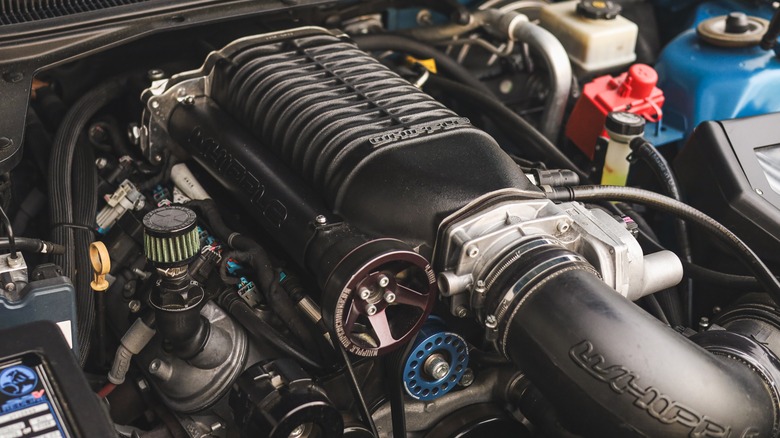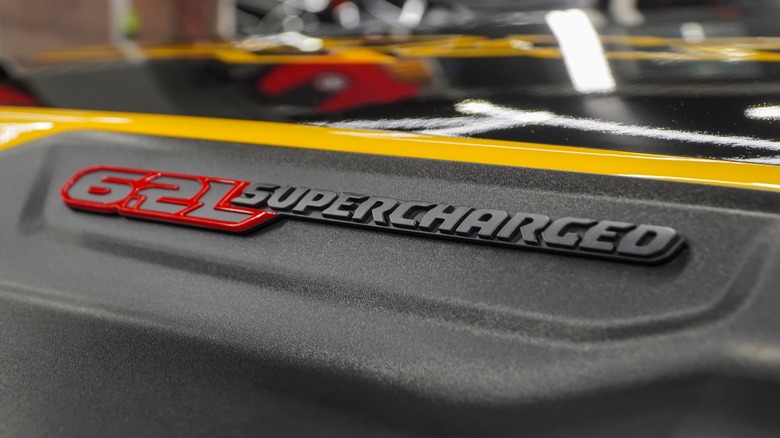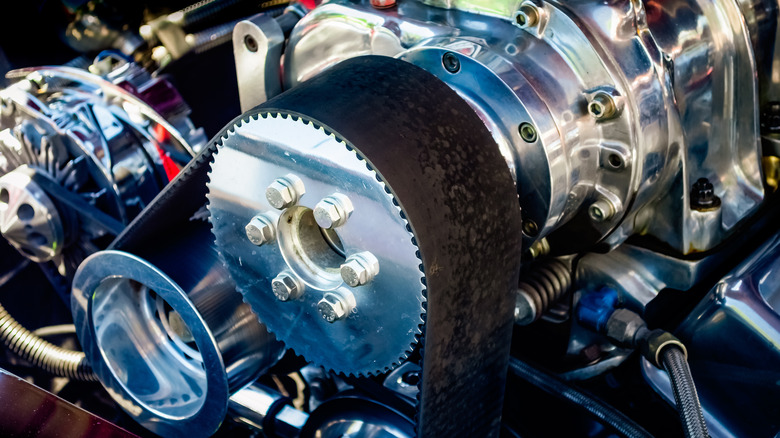Superchargers Can Definitely Affect Your Fuel Efficiency - Here's How
For a rare few tuned car owners out there, superchargers act as an X factor, giving them a significant amount of thrust and raw power when the need arises. Whether on a track or zooming down the freeway, these mechanical air compressors provide a significant advantage. Superchargers are sometimes confused with turbochargers, which are more commonly used by OEMs and tuners. With an endless array of components and ways to tune engines, hobbyists can push the limits of man-and-machine like never before.
People that like to drive fast are likely not too concerned with gas mileage. However, with certain configurations on a tweaked engine — like a supercharger — it will change your fuel efficiency. Whether you're in the market for a used supercharged car, or looking to add a supercharger to your existing engine, your fuel efficiency will be affected. Let's explore how the need for speed relates to your time at the pump.
Superchargers and fuel economy
Superchargers can produce eye-watering speeds and pin drivers against their seats when they put the hammer down. They come in four styles: roots, twin-screw, centrifugal, and electric. Regardless of the engine, the roots style has the biggest impact on the mpg.
This phenomenon is known as parasitic loss, where the supercharger draws power from the engine like other auxiliary components. If you're more familiar with turbochargers, superchargers differ in that, while acting as an air compressor, they essentially require gas — powered by the crankshaft – increasing the amount of air that goes into the intake, forcing more oxygen into the cylinders. A turbocharger runs off of the exhaust gases created by an engine, typically providing more power potential more efficiently.
Roots superchargers, which you might see on muscle cars with a blower, take a substantial parasitic load, as they are constantly displacing air, even when you're not pushing hard on the accelerator. What's more, these superchargers heat the incoming air, in turn altering the air density, which means more fuel is required to get the balance right. All of this adds up to a negative effect on fuel economy.
However, when ripping around a racetrack, this is surely less of a concern, with a sunk cost of gas factored in. For driving around town, doing errands, getting groceries, sitting in stop-and-start traffic, drivers with two cars might want to leave their supercharged one at home.
The future of boost
With the automotive industry continuing to evolve, and sports like F1 pushing the technological envelope, it's hard to see where supercharger technology might end up. Though supercharger technology actually dates back to the industrial era, in 1849, with later implementation in car configuration by Mercedes-Benz in 1923, it has been refined over the years.
However, these days, we find ourselves at a crossroads between fossil fuel dependence and EV advancements. Supercharged engine fuel efficiency may yet be improved even more with the help of technology, where electric superchargers offer on-demand boost like their mechanical cousins, only they operate independently from the crankshaft.
These modern superchargers draw power from a car's battery, in turn lessening the parasitic loss associated with mechanical versions. As such, they have less of an impact on overall fuel economy. More than fifteen years ago, 12-volt electric versions were unveiled, with emissions equivalent to diesel engines. The next jump in electric supercharger technology are more powerful 48-volt versions, with more efficiency potential.
They achieve better efficiency with "boost recuperation," and operating while coasting, where the engine is switched off at higher speeds. Modern hybrid cars couldn't be further from the supercharged Shelbys of yesteryear, and they certainly drink up less gas. Whether superchargers will further evolve and be widely adopted into mainstream hybrid car tech remains to be seen.


